-
 Bitcoin
Bitcoin $115100
-2.99% -
 Ethereum
Ethereum $3642
-1.38% -
 XRP
XRP $3.027
-5.51% -
 Tether USDt
Tether USDt $1.000
-0.05% -
 BNB
BNB $763.4
-1.32% -
 Solana
Solana $177.2
-5.42% -
 USDC
USDC $0.9999
-0.02% -
 Dogecoin
Dogecoin $0.2247
-6.47% -
 TRON
TRON $0.3135
0.23% -
 Cardano
Cardano $0.7824
-4.46% -
 Hyperliquid
Hyperliquid $42.53
-0.97% -
 Stellar
Stellar $0.4096
-6.09% -
 Sui
Sui $3.662
-2.61% -
 Chainlink
Chainlink $17.63
-3.57% -
 Bitcoin Cash
Bitcoin Cash $536.3
2.94% -
 Hedera
Hedera $0.2450
0.34% -
 Avalanche
Avalanche $23.23
-3.15% -
 Litecoin
Litecoin $112.2
-1.23% -
 UNUS SED LEO
UNUS SED LEO $8.976
-0.30% -
 Shiba Inu
Shiba Inu $0.00001341
-2.72% -
 Toncoin
Toncoin $3.101
-2.44% -
 Ethena USDe
Ethena USDe $1.001
-0.05% -
 Uniswap
Uniswap $10.08
-1.97% -
 Polkadot
Polkadot $3.938
-2.77% -
 Monero
Monero $323.9
0.87% -
 Dai
Dai $0.9999
-0.02% -
 Bitget Token
Bitget Token $4.481
-1.69% -
 Pepe
Pepe $0.00001199
-5.94% -
 Aave
Aave $288.2
-0.68% -
 Cronos
Cronos $0.1279
0.36%
Is KuCoin lending profitable?
KuCoin Lending lets users earn interest by lending crypto to margin traders, with flexible rates and collateral-backed loans for security.
Jul 24, 2025 at 10:07 pm
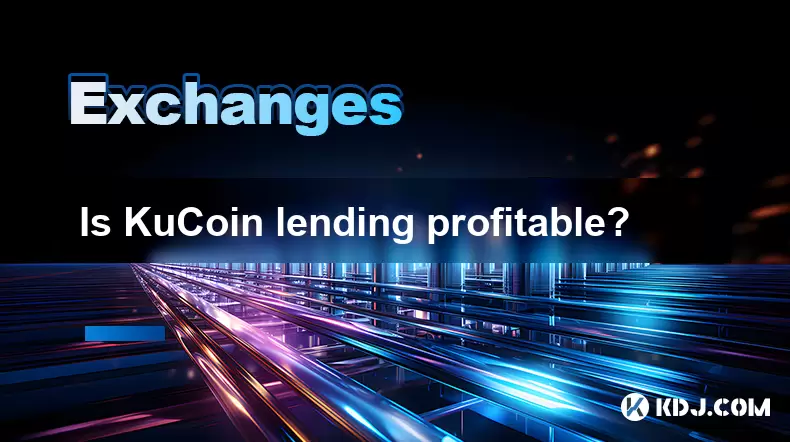
Understanding KuCoin Lending
KuCoin Lending is a feature offered by the KuCoin cryptocurrency exchange that allows users to lend their digital assets to margin traders in exchange for interest. This service is part of KuCoin's broader financial offerings and is designed for users who wish to generate passive income from their idle crypto holdings. Lenders set the interest rate and the amount of crypto they are willing to lend, while borrowers can take out short-term loans by providing collateral. The platform facilitates the matching of lenders and borrowers, ensuring the process is secure and transparent.
How KuCoin Lending Works
The mechanism behind KuCoin Lending is relatively straightforward. Users deposit their cryptocurrencies into the lending pool, select the interest rate they are comfortable with, and specify the loan duration. Once a borrower accepts the terms, the funds are transferred, and the lender begins earning interest. The platform automatically handles the distribution of interest on an hourly basis. The interest is paid in the same cryptocurrency that was lent, which means users must be mindful of price fluctuations that could affect their returns.
One of the key features of KuCoin Lending is its flexible interest rate system, which allows lenders to choose between fixed and floating rates. Fixed rates offer stability, while floating rates can fluctuate based on market demand, potentially offering higher returns during periods of high borrowing activity.
Factors Affecting Profitability
Several factors influence the profitability of KuCoin Lending. Market demand for borrowing a specific cryptocurrency plays a significant role in determining the interest rate. For example, if there is high demand for Bitcoin borrowing, lenders may earn higher returns. Conversely, less popular cryptocurrencies may offer lower yields due to reduced borrowing activity.
The loan-to-value (LTV) ratio is another crucial factor. Borrowers must provide collateral, and the LTV ratio determines how much they can borrow relative to the value of their collateral. A lower LTV ratio generally means less risk for lenders, but it may also result in fewer lending opportunities. Additionally, the duration of the loan can impact returns. Short-term loans provide more flexibility, while long-term loans may offer higher interest rates but tie up funds for extended periods.
Risks Involved in KuCoin Lending
While KuCoin Lending can be profitable, it is not without risks. Cryptocurrency price volatility is one of the primary concerns. If the value of the lent asset drops significantly, the returns in fiat terms may be lower than expected. Furthermore, smart contract vulnerabilities pose a risk, as the entire lending process relies on automated contracts. Although KuCoin has security measures in place, no system is entirely immune to exploits or bugs.
Platform risk is another consideration. If KuCoin experiences technical issues or regulatory challenges, it could affect the lending process and the timely return of funds. Additionally, liquidity risk may arise if a lender is unable to withdraw their funds quickly due to market conditions or platform restrictions. Collateral liquidation is also a potential issue. If a borrower's collateral value drops below a certain threshold, their position may be liquidated, which could impact the lender's returns depending on the recovery process.
Strategies to Maximize Returns
To maximize profitability on KuCoin Lending, users should adopt a strategic approach. Monitoring market trends is essential. By keeping track of which cryptocurrencies are in high demand for borrowing, lenders can adjust their portfolios accordingly. Diversifying the lending portfolio across multiple cryptocurrencies can also help mitigate risks and stabilize returns.
Adjusting interest rates dynamically based on market conditions can improve earnings. For instance, increasing rates during high-demand periods can attract more borrowers, while lowering them during low-demand phases can maintain lending activity. Setting realistic loan durations is also important. Short-term loans allow for more frequent adjustments, while long-term loans may offer better returns for those willing to commit their funds.
Using KuCoin's analytics tools can provide valuable insights into lending performance and market behavior. These tools help users make informed decisions about which assets to lend, when to adjust rates, and how to manage risk effectively.
Real-World Examples of KuCoin Lending Performance
Looking at historical data, KuCoin Lending has shown varying degrees of profitability depending on the asset and market conditions. For example, during periods of high Bitcoin volatility, lenders have earned consistent returns due to increased borrowing activity. Ethereum has also been a popular choice for lending, with interest rates fluctuating based on DeFi trends and network congestion.
Stablecoins like USDT and USDC have consistently offered lower but more stable returns compared to volatile assets. This makes them attractive to risk-averse lenders who prioritize capital preservation. Lesser-known altcoins have shown potential for higher yields, but they come with increased risk due to lower liquidity and less predictable demand.
FAQs
What is the minimum amount required to start lending on KuCoin?
KuCoin does not enforce a strict minimum, but users should consider the transaction fees and potential returns when deciding how much to lend. Small amounts may not generate significant profits due to these costs.
Can I cancel a lending order on KuCoin?
Yes, users can cancel active lending orders before they are matched with a borrower. However, once a loan is initiated, it must run its full term unless the borrower repays early.
Are there tax implications for earnings from KuCoin Lending?
Tax regulations vary by jurisdiction, but in many countries, lending income is considered taxable. Users should consult a tax professional to understand their obligations.
How does KuCoin handle loan defaults?
KuCoin uses a collateral system to minimize default risk. If a borrower defaults, the collateral is liquidated to cover the lender's funds, although the process may not always recover the full amount depending on market conditions.
Disclaimer:info@kdj.com
The information provided is not trading advice. kdj.com does not assume any responsibility for any investments made based on the information provided in this article. Cryptocurrencies are highly volatile and it is highly recommended that you invest with caution after thorough research!
If you believe that the content used on this website infringes your copyright, please contact us immediately (info@kdj.com) and we will delete it promptly.
- Kaspa's Strongest Month REVEALED: New Data Shocks KAS Traders!
- 2025-07-26 04:30:12
- Crypto Losses: From ZIRP to Zero - How I Lost a Million Dollars (and What You Can Learn)
- 2025-07-26 04:30:12
- BONK's Wild Ride: Selling Pressure and Market Dip - A New Yorker's Take
- 2025-07-26 03:30:12
- Pepeto Presale Heats Up: Demo Trading and Meme Coin Mania!
- 2025-07-26 02:50:11
- WeWake, Nexchain AI, and the Crypto Presale Frenzy: What You Need to Know
- 2025-07-26 02:50:11
- Scottie Pippen's XRP Moonshot: A Slam Dunk or an Air Ball?
- 2025-07-26 03:30:12
Related knowledge
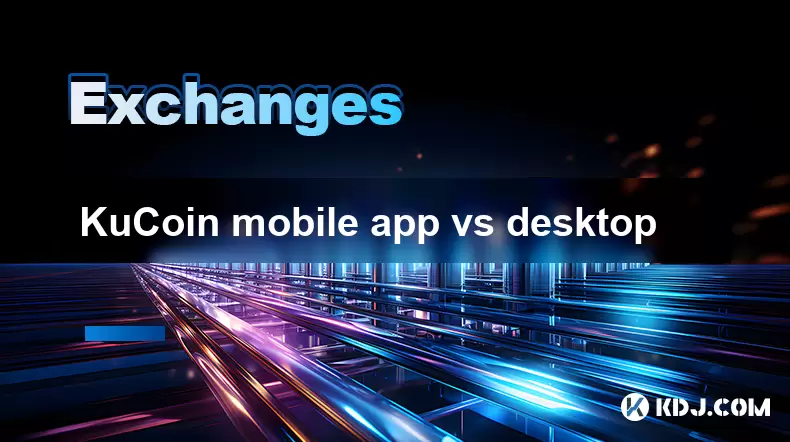
KuCoin mobile app vs desktop
Jul 19,2025 at 08:35am
Overview of KuCoin Mobile App and Desktop PlatformThe KuCoin ecosystem offers both a mobile app and a desktop platform, each designed to cater to diff...
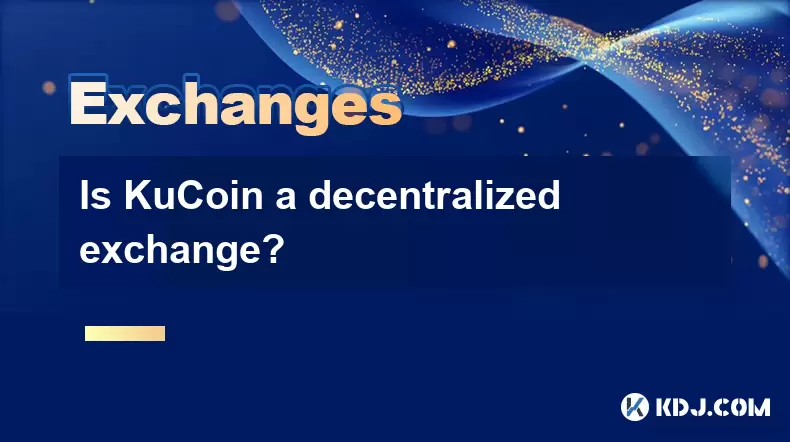
Is KuCoin a decentralized exchange?
Jul 18,2025 at 03:15pm
Understanding Decentralized Exchanges (DEXs)To determine whether KuCoin is a decentralized exchange, it's essential to first understand what defines a...
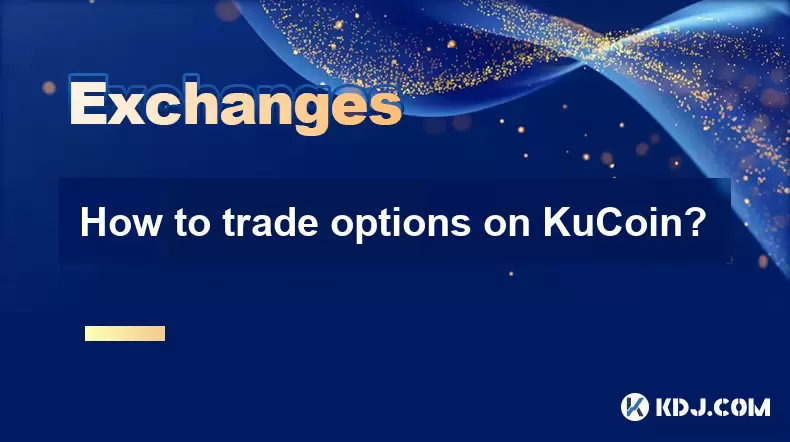
How to trade options on KuCoin?
Jul 19,2025 at 03:42am
Understanding Options Trading on KuCoinOptions trading on KuCoin allows users to speculate on the future price movements of cryptocurrencies without o...
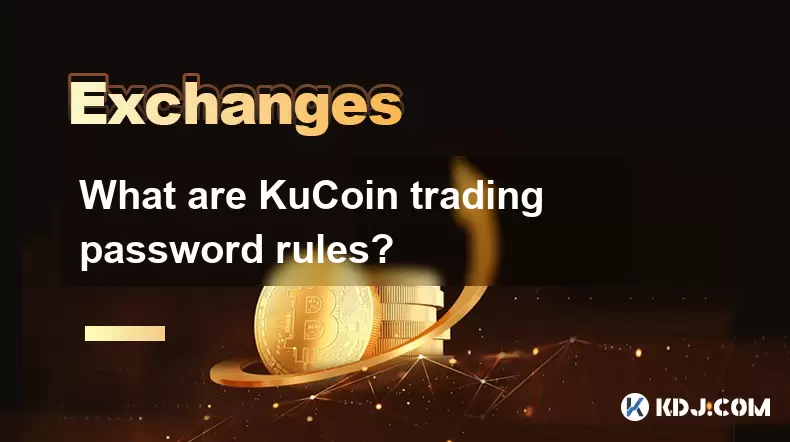
What are KuCoin trading password rules?
Jul 20,2025 at 07:56am
Understanding the Purpose of a Trading Password on KuCoinOn KuCoin, a trading password serves as an additional layer of security beyond the standard l...

Who is the CEO of KuCoin?
Jul 20,2025 at 09:35am
Background of KuCoinKuCoin is one of the largest cryptocurrency exchanges globally, known for its diverse range of trading pairs and user-friendly int...
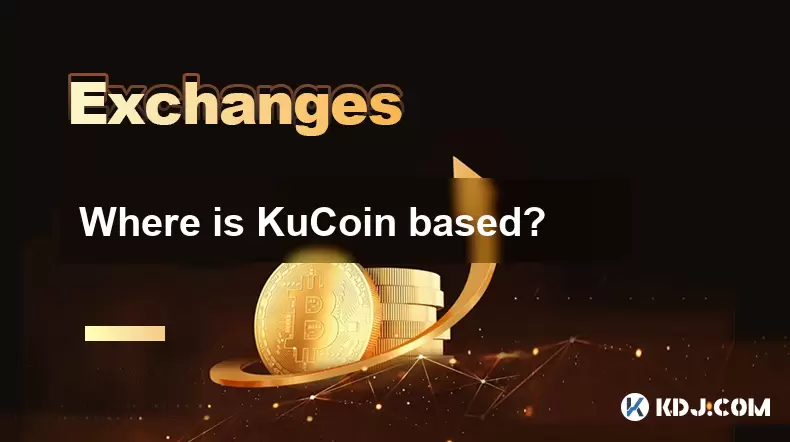
Where is KuCoin based?
Jul 22,2025 at 10:35pm
Understanding KuCoin's Global PresenceKuCoin is one of the most recognized names in the cryptocurrency exchange market, serving millions of users glob...

KuCoin mobile app vs desktop
Jul 19,2025 at 08:35am
Overview of KuCoin Mobile App and Desktop PlatformThe KuCoin ecosystem offers both a mobile app and a desktop platform, each designed to cater to diff...

Is KuCoin a decentralized exchange?
Jul 18,2025 at 03:15pm
Understanding Decentralized Exchanges (DEXs)To determine whether KuCoin is a decentralized exchange, it's essential to first understand what defines a...

How to trade options on KuCoin?
Jul 19,2025 at 03:42am
Understanding Options Trading on KuCoinOptions trading on KuCoin allows users to speculate on the future price movements of cryptocurrencies without o...

What are KuCoin trading password rules?
Jul 20,2025 at 07:56am
Understanding the Purpose of a Trading Password on KuCoinOn KuCoin, a trading password serves as an additional layer of security beyond the standard l...

Who is the CEO of KuCoin?
Jul 20,2025 at 09:35am
Background of KuCoinKuCoin is one of the largest cryptocurrency exchanges globally, known for its diverse range of trading pairs and user-friendly int...

Where is KuCoin based?
Jul 22,2025 at 10:35pm
Understanding KuCoin's Global PresenceKuCoin is one of the most recognized names in the cryptocurrency exchange market, serving millions of users glob...
See all articles

























































































